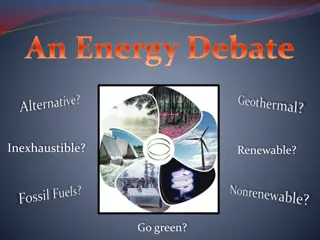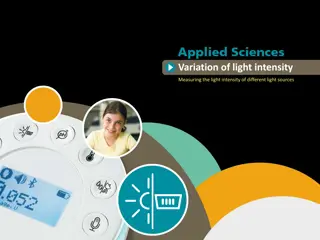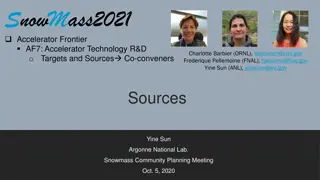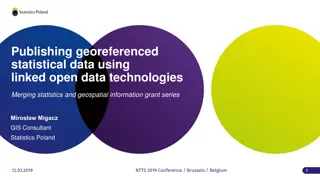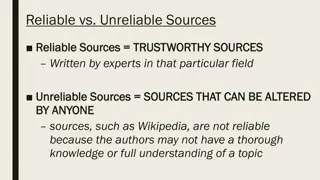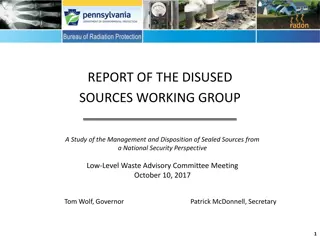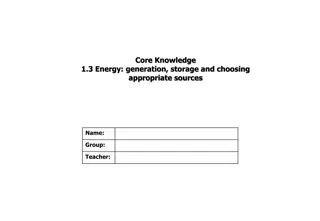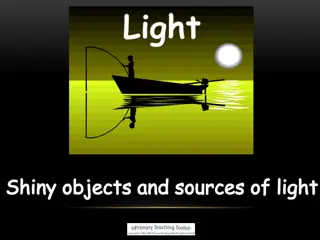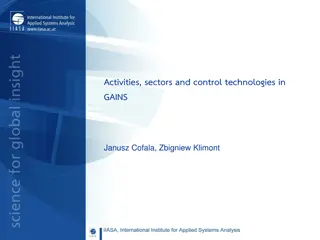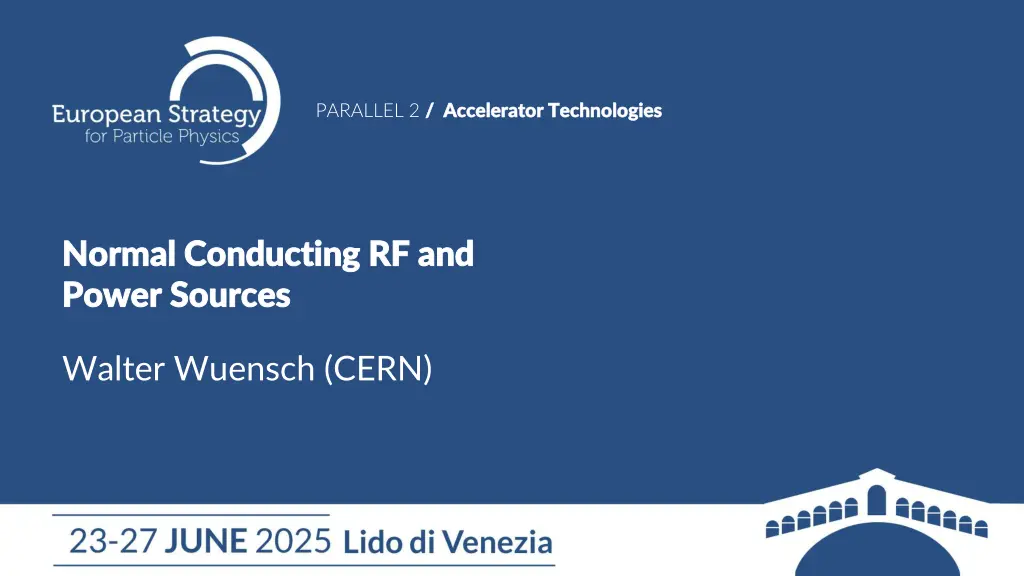
Advanced Accelerator Technologies Overview
Explore the cutting-edge technologies in accelerator systems, focusing on key advancements in Normal Conducting RF and Power Sources for applications such as CLIC, Muon Collider, and more. Discover the latest developments, challenges, and future prospects in the field of accelerator technology.
Download Presentation

Please find below an Image/Link to download the presentation.
The content on the website is provided AS IS for your information and personal use only. It may not be sold, licensed, or shared on other websites without obtaining consent from the author. If you encounter any issues during the download, it is possible that the publisher has removed the file from their server.
You are allowed to download the files provided on this website for personal or commercial use, subject to the condition that they are used lawfully. All files are the property of their respective owners.
The content on the website is provided AS IS for your information and personal use only. It may not be sold, licensed, or shared on other websites without obtaining consent from the author.
E N D
Presentation Transcript
PARALLEL 2 / Accelerator Technologies / Accelerator Technologies Normal Conducting RF and Normal Conducting RF and Power Sources Power Sources Walter Wuensch (CERN)
Outline Normal Conducting RF Power Sources CLIC FCCee Muon Collider Plasma C3 FCCee CLIC ILC and LCF Muon Collider
NCRF - CLIC Normal conducting RF is a key technology for energy reach, luminosity/power and cost. Most challenging in main linac, but also used in injectors, drive beam accelerator and two-beam power generation. Gradient Gradient 72 MV/m loaded gradient in 380 GeV stage, 100 MV/m introduced in later stages with low, O(10-7/m), breakdown rate. 70-100+ MV/m gradient demonstrated in tens of test, prototype and application structures. Good understanding of fundamentals of high fields. Test infrastructure exists but requires continuation.
NCRF - CLIC Higher Higher- -order luminosity/power allowing stable beam in heavy beam loading conditions. Baseline is waveguide damping. Directly demonstrated at ASSET/FACET. Micron Micron- -level fabrication level fabrication Critical for control of short-range wakefields for high luminosity. Achieved in prototypes and application structures with commercial fabrication technology. Engineering Engineering Prototypes made but mass production design needs further development. Small to medium series production of simpler structures in applications, e.g. SwissFEL, SACLA, VIGAS, Smart*Light, linearizers, deflectors etc. order- -mode suppression mode suppression Critical for Synergies Synergies Strong community of small to medium sized application using high-gradient and high- frequency technology. See for example HG2025 https://indico.fnal.gov/event/65159/.
NCRF FCCee injector FCCee injector uses normal conducting RF. At 20 GeV is a major installation, to be compared to SwissFEL which is 6 GeV. Frequency Frequency - 2 GHz for positron linac, 2.8 GHz for electrons near standard frequency. May move to 3 GHz. Gradient Gradient Intentionally conservative 21 MV/m. Wakefields Wakefields 4-bunch operation, HOM suppression via detuning, no damping is required. Engineering Engineering Will be based on SwissFEL-type fabrication technology.
NCRF Muon Collider Key technology for the muon capture and cooling channel. High High- -Gradient Gradient - 20 to 30 MV/m, in high, 2 to 17 T external magnetic field, 10, 352 and 704 MHz Unique challenge. Requires new test infrastructure and extensive testing program. High-gradient fundamentals will build on CLIC effort.
NCRF Plasma HALHF Positron acceleration using C3 technology, e- drive beam based on CLIC. AWAKE- Electron injection based on CLIC linac technology, combination of CTF/CLEAR and X-band. EuPRAXIA Electron drive beam and beam preparation based on high-gradient X-band technology.
NCRF C3 Gradient Gradient 70 MV/m for 250 GeV and 120 MV/m for 550 GeV. Cryogenic copper Cryogenic copper For reduced peak power requirement, significant cost saving. Gives higher gradient. Somewhat less efficient than room temperature. Distributed coupling structures Distributed coupling structures High shunt impedance for high efficiency. HOM suppression open issue
Outline Normal Conducting RF Power Sources CLIC FCCee Muon Collider Plasma C3 FCCee CLIC ILC and LCF Muon Collider
Power Sources - FCCee Injector 2 and 3 GHz, 80 MW, 3 and 5 s, 100 Hz, 108 units. Similar to common 3 GHz tubes. Same power tubes exist but 40 MW is most common. Design, prototype-to-series remains to be carried out. Main ring Efficiency is a key parameter. For main ring Higgs stage, 100 MW RF required from 264 klystron+cavity units, 400 MHz CW. 380 kW, = 70% prototype exists (HL-LHC). Two-stage klystron design made for = 86%, similar to CLIC drive-beam and ILC klystrons. Concept for Tristron, = 93%, high over wider range of powers. Two-stage and tristron are more compact. HL-LHC Two-stage klystron (design) (relevant prototype) Tristron (concept)
Power Sources - CLIC Drive beam injector Drive beam injector 1 GHz, 21 MW, 50 s, = 71.5%, 100 Hz, 480 units. Prototype exists. Design made for two-stage = 80 % klystron, synergetic with FCCee and ILC. Two Two- -beam beam 12 GHz, unique power source subject of extensive testing and demonstration in CTF, CTF2 and CTF3. The latter showed combination, a beam-based form of pulse compression, and two-beam deceleration/acceleration.
Power Sources ILC and LCF ILC baseline ILC baseline 1.3 GHz, 20 MW, = 70 %. 750 units. Similar to EuropeanXFEL tube. LCF two LCF two- -stage design stage design Same technology as CLIC drive beam and FCCee intermediate version. CLIC drive-beam similar
Power Sources Muon collider Muon capture High peak power, 24 MW pulsed klystron for 352 and 704 MHz systems. Further power sources needed for other frequencies. Rings Basically 1.3 GHz ILC powering system. Pulsed. Many aspects still need to be studied and hardware specifications produced.
Power Sources General comments Power sources are a key technology for ALL proposed future projects. European laboratories have depended on a limited industrial supplier base of 3 companies (only 1 European). Large number of units required for all projects, well beyond current capacity of suppliers. High-power vacuum tubes have a very limited range of applications making a very irregular market. Limited accelerator laboratory capability to design and fabricate (SLAC) even prototype devices in contrast to superconducting magnets. Critical situation.





